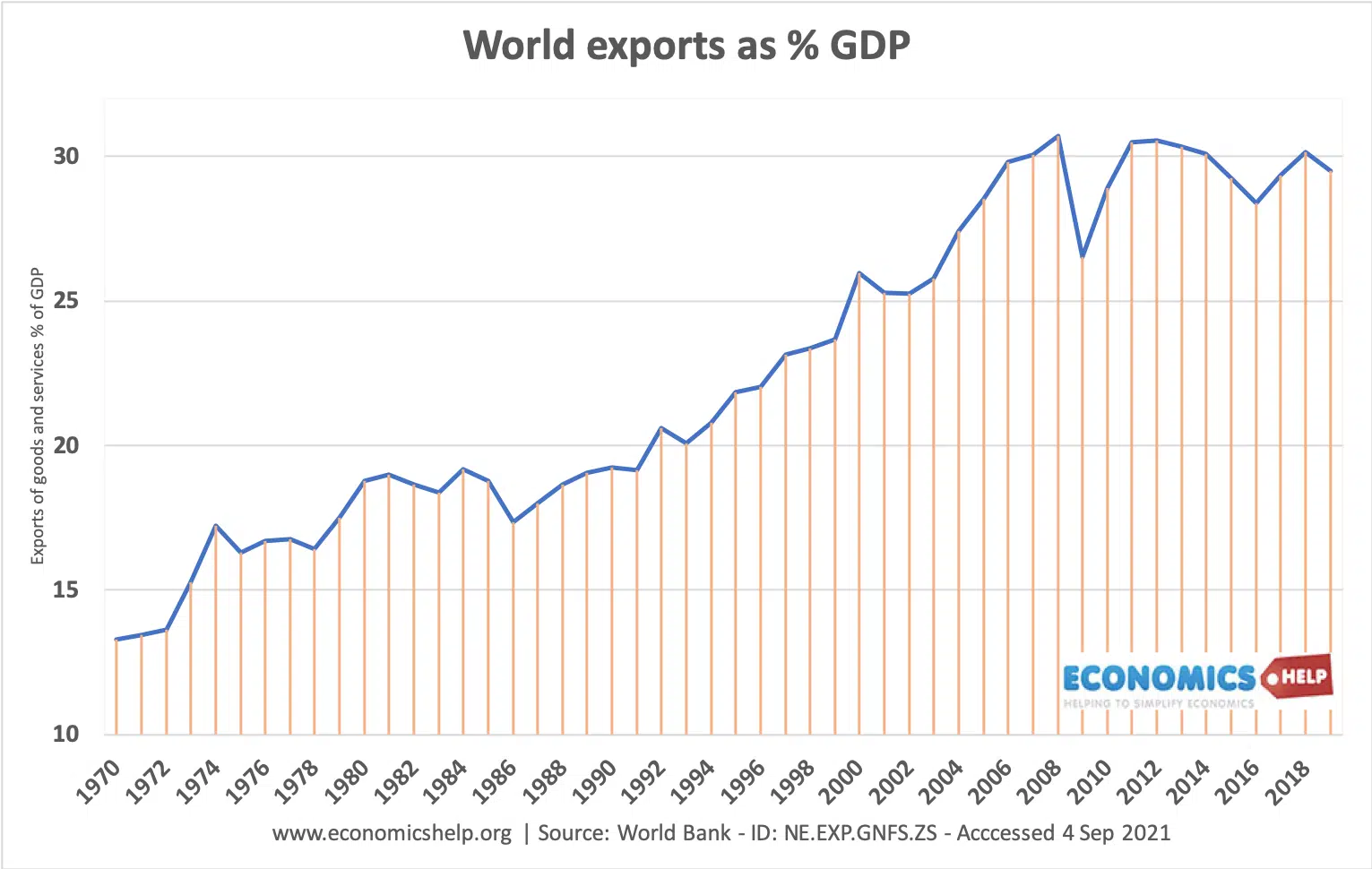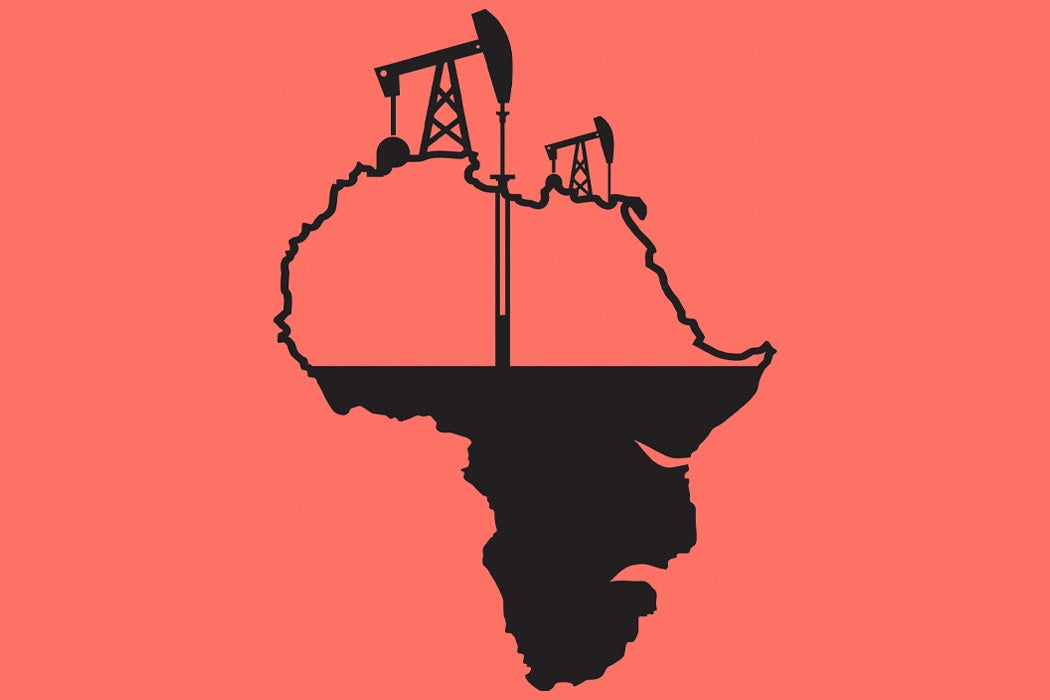A fourth distinguish characteristics of developing countries is that their trade tends to be dominated by the export of primary commodities and the import of manufactured goods. This has consequences for the terms of trade of developing countries, the distribution of the giants from trade between developed and developing countries, and the balance of payments situation — all of which may adversely affect real income per head. The trade of Africa, the Middle East, Latin America and the Caribbean is still dominated by primary commodities. Only Asia and the Pacific have made headway in reducing dependence on commodity exports.
The barter terms of trade measure the ratio of export price to import prices. There has been a historical tendency for the terms of trade of primary goods relative to manufactured goods to deteriorate over the last 100 years or so by about 0.5 per cent per annum on average. This tendency is known in the literature as the Prebisch-Singer thesis. The falling price of exports relative to imports reduces the real income of a country because more exports have to be exchanged to obtain a given quantity of imports.A second point to note is that the income elasticity of demand for primary commodities in world trade is less than unity, while the income elasticity of demand for manufactured goods is greater than unity. This means that as world income grows, the demand for primary commodities grows at a lower rate, but if developing countries grow at the same rate as the world economy their demand for manufactured imports grows at a faster rate. As a consequence, developing countries specializing in the production of primary commodities suffer acute balance of payments difficulties. Often, the only means available to developing countries to adjust the balance of payments is to slow down their economies in order to reduce the growth of imports.
The prices of primary commodities are also more cyclically volatile than the price of manufactured goods. This can also cause havoc to a country's balance of payments and its government's tax revenue if it relies heavily on trade taxes. The resulting instability makes planning difficult and may deter private domestic investment and investment from overseas.
For all those reasons, the structure of trade poses severe problems for many developing countries and may keep countries poor than they would be if they were able to produce and export more industrial goods. It is not possible to understand the growth and development process — and the perpetuation of divisions in the world economy —without reference to the unequal trading between rich and poor countries and the balance of payments consequences of specializing in primary commodities.
In general, it seems to be the case that the more natural resources a country has, the poorer it performs. This phenomenon is referred to in the literature as the 'curse of natural resources' (Sachs and Warner, 2001; Gylfason, 2001). There is a very strong negative relationship and the regression coefficient of -0.0871 indicates that a country with a primary sector share 11 percentage points above the average has experienced a growth of per capita income of one percent below the average (controlling for the initial level of per capita income). This represents a substantial loss of welfare.
The same negative pattern emerges when the growth of per capita income is regressed against the export of natural resources as a share of GDP; and the negative relation persists even when controlling for other variables such as differences in the level of investment between countries, and for climate and geography.
Most countries that have grown rapidly in recent decades started as resource poor, not resource rich. There are exceptions to this general rule — countries such as Malaysia, Thailand, Indonesia, Botswana, for example — but most of these exceptional countries have grown fast not through the exploitation of natural resources but through diversification into manufacturing industry.
Curse of natural resource
What lies behind this ‘curse of natural resource’? A number of factors fan be mentioned, which interrelate with each other, that seem to affect adversely may of the important determinants of development. Glyfason shows a negative relation across countries between the share of the primary sector in the labour force and export performance, domestic and foreign investment and education, and a positive relation with the size of external debt, the level of protection, corruption and income inequality.
We have already seen why primary production can lead to poor export performance because many natural resources are income inelastic and suffer terms of trade deterioration, by why should natural resources abundant countries neglect investment and education, and be more corrupt? There are two major explanations.
Firstly, natural resource abundance may 'crowd-out' other activities 'through two mechanisms:
(1) higher wages or earnings in the natural resources sector impairing entrepreneurial activity and innovation in other sectors, and
(2) revenues from natural resources exports keeping the exchange rate artificially high which makes the rest of the economy uncompetitive.
This is known as the Dutch Disease — so named because of the effect that the discovery of natural gas in Holland in the 1960s had on the exchange rate and other sectors of the economy. Sachs and Warner (2001) test this 'crowding out' hypothesis across 99 countries and find a positive correlation between natural resource abundance and the domestic price level. The higher relative price level is then found to impede the export growth of manufactured goods. It could also be that a country rich in natural resources simply neglects to develop other sectors of the economy.
A second major explanation why natural resource abundance may lead to poor performance is that the rents from natural resources may be misused by politicians and bureaucrats. Democracy and the rule of law seem to be inversely related to natural resource abundance, and Gylfason (2001) shows corruption to be more widespread in natural resource abundant countries.This is not surprising since limiting access to a resource provides a rent, and where the state owns the resource, bureaucrats, will take bribes in return for exploitation rights. Tent earners may not be interested in schooling and education, having lined their own pockets, and those of their children, without acquiring an education. Thus, rent seeking leads to low levels of expenditure on education and school enrolment. it is also the case that the primary sector of an economy does not have the same educational needs as a more diversified economy.











0 Comments